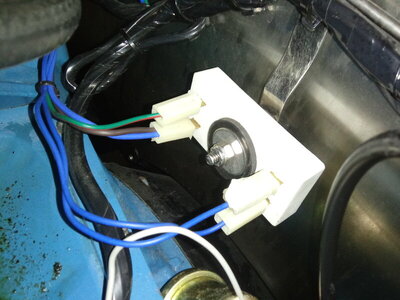What's the voltage at the coil while cranking? I believe IGN2 (brown) sends 12v from BATT to the coil, bypassing the BR when starting. In run position, the BR is back in the cct from IGN1 (blue), reduced voltage to the coil. When I changed to a pertronix system and removed the BR, I forgot to connect the brown and blue together, which acted similar to what you are describing. Don't worry about the GND tab. Some of the accessorized Chryslers, ets, had a ground wire connected to it. If your harness didn't have a wire for it, it should not be an issue.

















